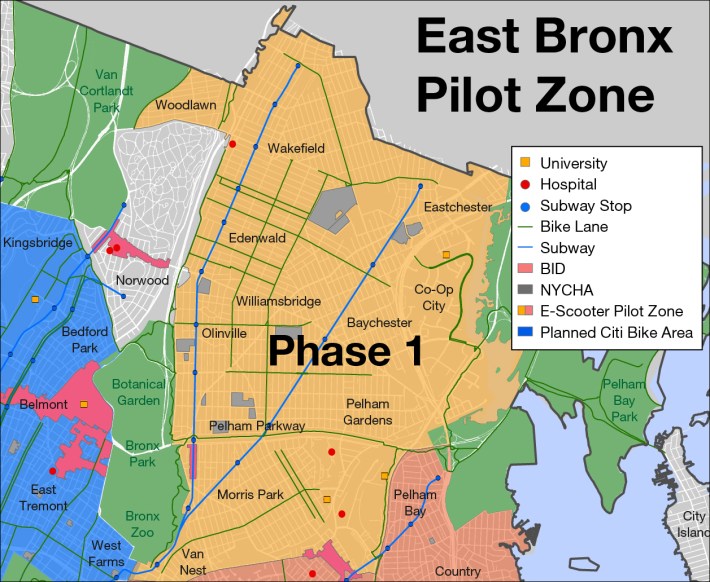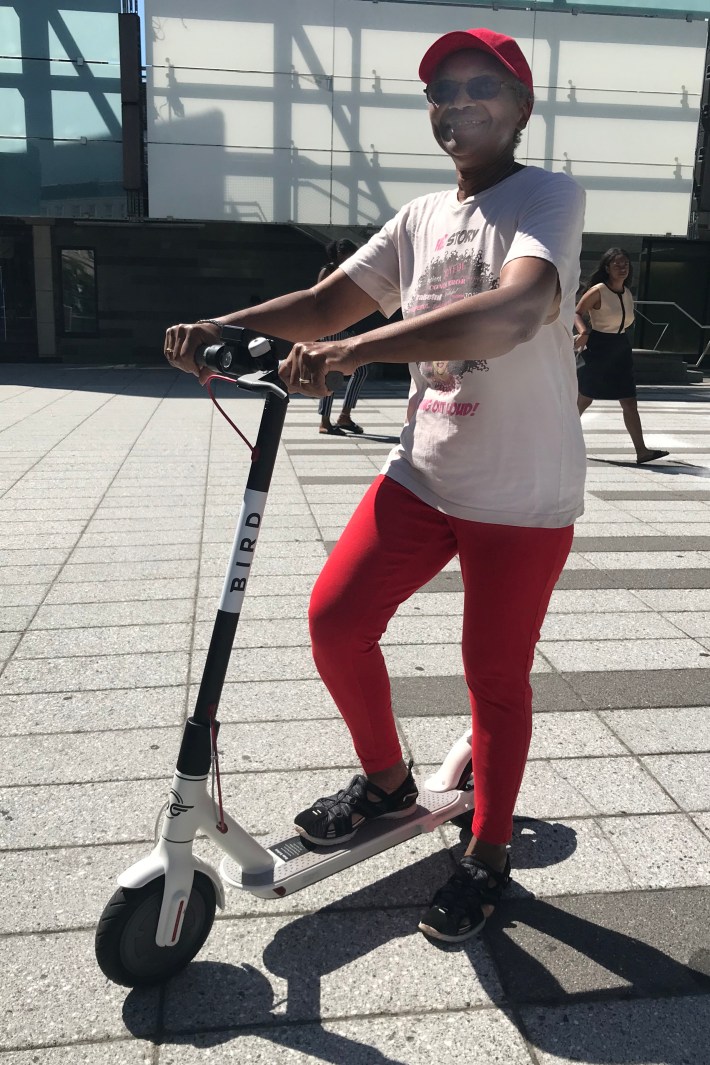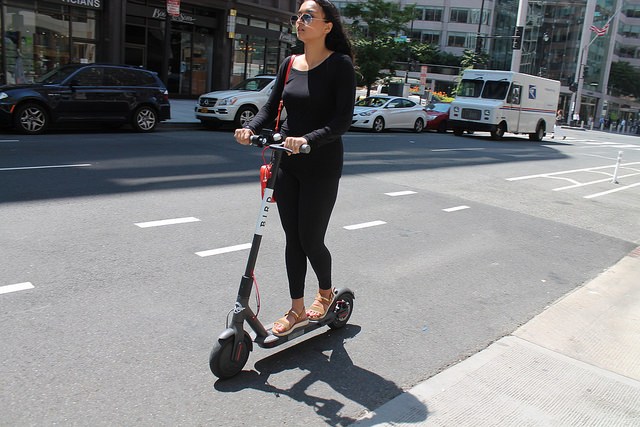Maybe the New York City Department of Transportation got it right?
A new study of the scooter-share program in Washington, D.C. suggests that customers mostly want to hop on a shared tw0-wheeler to get to transit stops or to commercial areas — which seems to be the goal of the DOT when it selected a large "two-fare" zone of The Bronx as the testing ground for scooter-share last month.
A team of researchers at Florida Atlantic University and the University of Florida that analyzed a massive trove of trip data from the nation's capital found "a strong correlation between scooter use and the presence of all transit stop types," said the study, which was published late last month in the journal Transportation Research. "Metro stations, circulator stops, streetcar stops, and bus stops show a positive association with scooter destinations" even when accounting for Washington's large number of tourists gravitating to key attractions.
"The fact that transit stops are still significant after controlling for these other destination types suggests that the stops themselves are likely attractor for scooter trip destinations," the study added.
Study co-author Louis Merlin later suggested that his group's findings show that it's likely The Bronx pilot program will be extremely useful to residents there.
"There does appear to be a complementary affect with public transit, i.e. people using scooters for first-mile and last-mile trips to public transit," he to Streetsblog. "Commercial areas were also attractions for scooter trip destinations."

Such a finding suggests that the DOT did the right thing by creating the first scooter-share zone in the north Bronx, an area with some tourist attractions, certainly, but mostly in need of better and faster connections to transit. The Phase I zone (pictured at right) has many north-south subway options, but crosstown transit users have to rely on buses that are often stuck in traffic caused by car drivers.
The study also offered some tips for the DOT as it fine-tunes the scooter-share rules in advance of the expected launch (next month? When? DOT has not said):
- Lesson 1: Have lots of scooters! "Unsurprisingly, the availability of scooters on a segment over a day is the best predictor of scooter trip origins," the study said. (The DOT pilot program announcement suggests that there will be 2,000 to 3,000 scooters deployed — though it's anyone's guess if that's "enough.")
- Don't worry about serving parks: "Though people may take scooters to parks on occasion, overall, the relationship between park acreage and scooter use is negative," the study said.
- Plan ahead for scooter parking: "Logical locations for scooter corrals or other designated parking locations for large numbers of scooters might include nearby metro stops, streetcar stops, circulator stops, tourist attractions, and hotels. Notably, providing better parking facilities for e-scooters at transit stops is likely to encourage the greater combined use of e-scooters and public transit."
On the single largest question about scooters — will they replace cars (pretty please?) — the study was (damn) a bit inconclusive, finding "little relationship between auto ownership rates and scooter trip[s]."
But Merlin said that it simply may take a few years for the impact on car ownership to be known. Washington has only had scooter share since 2018, and the study period was one month in summer, 2019 — certainly not enough time for car owners to get rid of their vehicles.

"It takes a few years before someone becomes ready to shed a car," Merlin said. "Normally we would expect that scooters would be popular in places of low car ownership because people who do not own cars are looking for alternatives. But in the highly urbanized environments [such as] D.C., people probably prefer using a scooter to taking a car for a short trip, to avoid traffic and parking. It’s probably faster to take a scooter for a trip of two miles or less, so I am guessing whether or not people own cars does not effect their scooter use much in this context."
In other words, give them scooter share and they will give up the car for short trips, though not give up the car entirely.
Of course, there have been lots of studies of scooter use patterns — and they often contradict each other (sometimes in the same study). That's part of the reason New York has been a) slow to embrace scooter-share and b) is starting slowly with a single zone in a single borough.
"Understanding travel demand patterns of shared e-scooter use and the demographics most likely to use this alternative form of transportation are expected to be a moving target for several years," the study concluded.
For its part, DOT has said only that the pilot program is an experiment, but one that will "operate in alignment with the City’s Vision Zero and equity goals."
That's a key concern. A prior study by Lime suggested a racial gap in scooter use — one that a Bronx zone would likely reduce. But another study suggested that DOT will have a lot of work to do if scooters are to be widely used because scooter use increases with protected bike infrastructure ... and the Bronx has very little of that.
As President Trump was fond of saying, we'll just have to see what happens.






